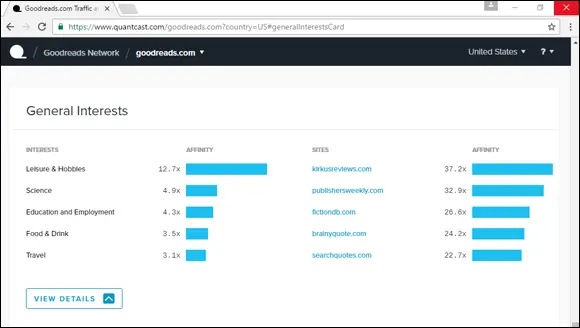Purchasing behavior in different life stages
Rather than look at a target market solely in terms of demographics, life stage analysis considers what people are doing with their lives, recognizing that it may affect media behavior and spending patterns.
Purchasing behavior may also differ by life stages, such as the family life cycle, as shown in Table 3-2. Note that the family life cycle described in the table may not accurately reflect the wider range of today’s lifestyles.
TABLE 3-2Stage in the Family Life Cycle
| Life Stage |
Sample Products or Services They Buy |
| Single, no children (also known as Bachelor Stage) |
Fashionable clothing, vehicles |
| Newly Married Couples, no children |
Good furniture, new homes, insurance |
| Family Nest 1, young children |
Baby food and toys, children’s items, activities, and education |
| Family Nest 2, older children |
College, possibly travel and furniture |
| Empty nest, children gone |
Vacations, hobbies, savings for retirement |
| Solitary survivor |
Savings, accommodations, medical expenses |
Source: Adapted from www.marketing91.com/family-life-cycle
 You’re looking for a fit between the profile of your target audience and that of the social media service.
You’re looking for a fit between the profile of your target audience and that of the social media service.
 With more flexible timing for going through life passages, demographic analysis isn’t enough for many types of products and services. Women may have children later in life; many older, nontraditional students go back to college; some retirees reenter the workforce to supplement Social Security earnings. What your prospective customers do each day may influence what they buy and which media outlets they use more than their age or location.
With more flexible timing for going through life passages, demographic analysis isn’t enough for many types of products and services. Women may have children later in life; many older, nontraditional students go back to college; some retirees reenter the workforce to supplement Social Security earnings. What your prospective customers do each day may influence what they buy and which media outlets they use more than their age or location.
For example, Statista found in 2019 there were nearly 3.5 billion mobile social media users worldwide. ( www.statista.com/topics/2478/mobile-social-networks/#:~:text=As%20of%20July%202019%2C%20there,and%20affordability%20of%20mobile%20internet).
Psychographics or lifestyle
Psychographic segmentation divides a market by social class, lifestyle, or the shared activities, interests, and opinions of prospective customers. It helps identify groups in a social-networking service or other, smaller, social networks that attract users who meet your desired profile.
Behavioral segmentation, which is closely related, divides potential buyers based on their uses, responses, or attitudes toward a product or service. To obtain this information about your customers, consider including a quick poll as part of your e-newsletter, website, or blog. Although the results from those who reply may not be exactly representative of your total customer base — or that of prospective customers — a survey gives you some starter data.
 Don’t confuse the psychographic profile of a group with personality traits specific to an individual.
Don’t confuse the psychographic profile of a group with personality traits specific to an individual.
Psychographic segmentation, such as that found at http://strategicbusinessinsights.com/vals/usframework2015-08.png , helps you identify not only where to promote your company but also how to craft your message. For example, understanding your specific target group, its mindset, and its lifestyle might help you appeal to customers such as the Innovators described at that URL; they might be interested in your high-end line of fashion, home decor, or vacation destinations. Or you might target Experiencers at that URL for a wild new restaurant, a zipline adventure, or an energy drink.
 To develop a better understanding of psychographic profiling, take the quick VALS (Values and Life Styles) survey yourself at
To develop a better understanding of psychographic profiling, take the quick VALS (Values and Life Styles) survey yourself at www.strategicbusinessinsights.com/vals/presurvey.shtml .
Segmenting by affinity group (a group of people who share similar interests or participate in similar activities) fills in the blank at the end of the “People who like this interest or activity also like …” statement. Because psychographic segmentation uses activity as a subsection, that approach is somewhat similar.
For example, in Figure 3-2, Quantcast estimates other interests of visitors to Goodreads ( www.goodreads.com ) based on their browsing behavior under the General Interests option. (This data is available only for quantified sites — that is, sites for which the site owners have verified the data.) A check mark to the right of the name of the site indicates that it is quantified; otherwise, you see the label “not quantified.”
 For information on clickstream analysis (where visitors come from and where they go), see Book 9, Chapter 6.
For information on clickstream analysis (where visitors come from and where they go), see Book 9, Chapter 6.

FIGURE 3-2:Quantcast estimates topics that interest users of Goodreads.
By using Quantcast in this way, you can obtain public information about visits to specific social media services or to your competitors’ or other related businesses’ websites. You can also use these services to profile your own business, although your website might be too small to provide more than rough estimates. If your business is too small, estimate the interest profile for your target market by running Quantcast for a verified, large corporation that offers a similar product or service.
 Sign up for free, direct measurement of your apps and websites at
Sign up for free, direct measurement of your apps and websites at www.quantcast.com/user/signup . Alexa’s paid options include Certified Site Metrics, if you want an independent, direct measurement of your site traffic and a more accurate site ranking. To get certified, you’ll need to sign up for one of the paid options and install Alexa’s Certify Code on your site. You can choose whether or not to display your results to the public.
Otherwise, consider polling your customers to find out more about their specific interests.
You can also use Google Trends ( www.google.com/trends/explore#cmpt=q ) to search by the interest categories shown in Table 3-3. Click All Categories at the top of the page to open a drop-down list. Google Trends uses real-time search data to estimate customer interest in various topics over time. You can select specific keywords, time periods, or locations for additional detail.
TABLE 3-3Main Categories Available on Google Trends
| Arts & Entertainment |
Autos & Vehicles |
Beauty & Fitness |
| Books & Literature |
Business & Industrial |
Computers & Electronics |
| Finance |
Food & Drink |
Games |
| Health |
Hobbies & Leisure |
Home & Garden |
| Internet & Telecom |
Jobs & Education |
Law & Government |
| News |
Online Communities |
People & Society |
| Pets & Animals |
Real Estate |
Reference |
| Science |
Shopping |
Sports |
| Travel |
|
|
Читать дальше

 You’re looking for a fit between the profile of your target audience and that of the social media service.
You’re looking for a fit between the profile of your target audience and that of the social media service. To develop a better understanding of psychographic profiling, take the quick VALS (Values and Life Styles) survey yourself at
To develop a better understanding of psychographic profiling, take the quick VALS (Values and Life Styles) survey yourself at 











